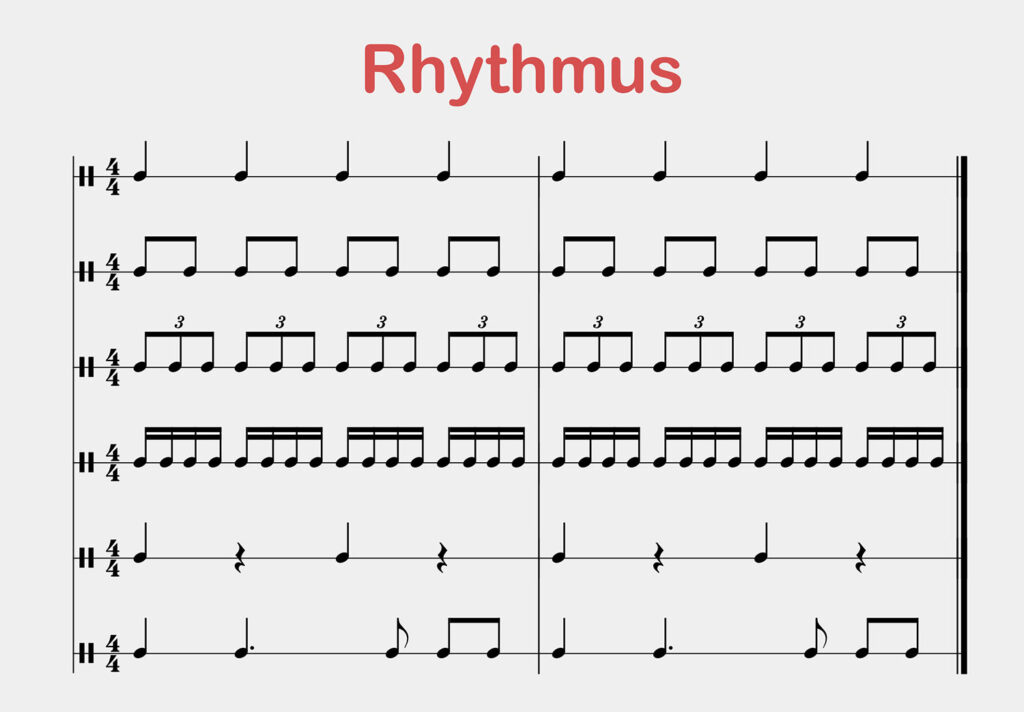In music, rhythm refers to a sequence of different note values that form a regular, repeating unit over time. A good rhythm is the foundation of a piece of music and gives it its own recognizable character. Depending on how different the note values are from each other, a rhythm can seem regular or irregular.
Rhythm can occur at very different speeds: A march, for example, can be played quickly or very slowly; what matters is the regularity of the beat, the pulse, which must be cyclically reproducible. This also includes the accentuation, i.e. the different emphasis of the individual notes.
The rhythmic aspect of music, which is closely linked to dance, is very old, perhaps the oldest: it is no coincidence that drums and other percussion instruments, which can only create rhythms because of their indeterminate sound, are the oldest known musical instruments and were used in the most primitive cultures. Rhythmic sounds, such as the drumbeat of raindrops, the murmur of a stream, or the chirping of birds, can be found in nature.
Keep reading: How to setup your drum set: beginner's guide (with photos)
Especially important to rhythm are accents, which are the greater importance (different intensity or emphasis) that certain sounds have over others in a piece of music or phrase. There are more accented beats (strong accents) and less accented beats (weak accents).
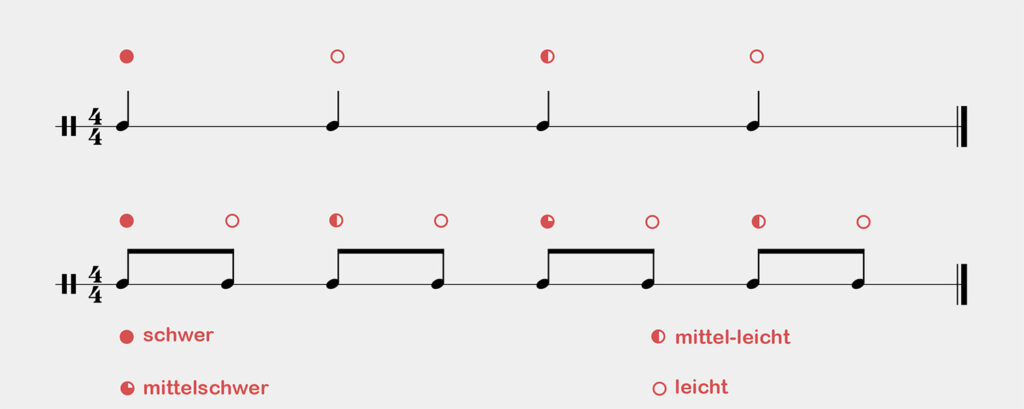
The sequence of accents in a piece of music usually tends to repeat at regular intervals, and this repetition is called the rhythm of the piece: The shortest non-periodic sequence (the one that is repeated) is also called the rhythmic unit.
When a piece is composed of several voices, human or instrumental, the rhythm is perceived to varying degrees in the different parts: the melody is often the one that is the least bound to a concise rhythmic structure, so this task is usually entrusted to a few instruments, collectively called the rhythm section.
In addition to percussion, other instruments such as double bass, piano, electric guitar and electric bass are of course part of an orchestra's rhythm section, and it is not uncommon for entire orchestral groups (e.g., strings or woodwinds) that are traditionally more committed to melodic-expressive interpretation to play particularly concise and cadenced passages to provide a solid rhythmic foundation upon which the melody can be played.
Different note values
Regular rhythms are usually created with note values such as whole, half, quarter, or eighth notes. These note values, which can be divided by 2, have a "straight" and "regular" effect and are therefore ideal for rhythm.
Of course, more complicated patterns such as dotted notes or triplets can also be used. These can be used to create syncopations that break the regularity of the rhythm and thus attract attention.
However, the rhythmic unity should not be broken too often - at least in most genres of music, with the exception of jazz - but should be steady, because this encourages people to dance. Whether in the car, at home, or at a concert, we all respond to the rhythm of a song with our bodies. Whether it is with our head, feet, or arms, we are always moving to the rhythm of the music.
Example: Different rhythms
To understand the different rhythms and their complexity, we will look at different rhythm patterns on the drum kit, the rhythm instrument par excellence. In particular, we will look at the hihat and make it more complex in rhythm, step by step.
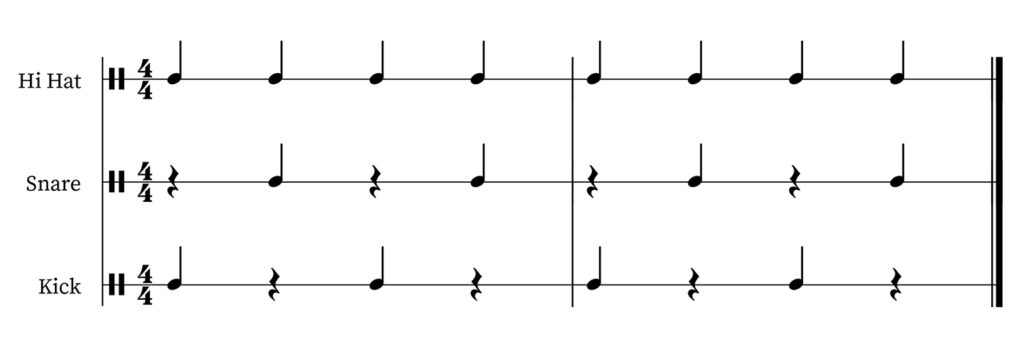
When we play eighth notes instead of quarter notes, the drum pattern becomes much more interesting and we get the classic rock and pop pattern that can be found in countless songs:
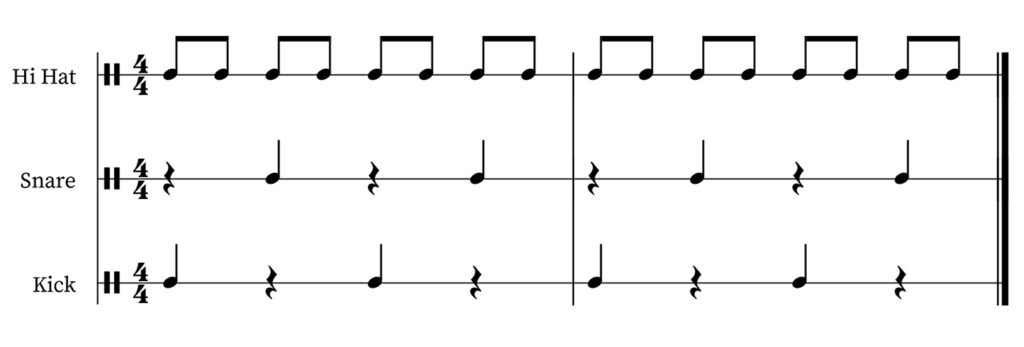
If we wanted to add more tension and dynamics, we could play sixteenth notes with the hi-hat instead of eighth notes, and we would have a pattern like this:
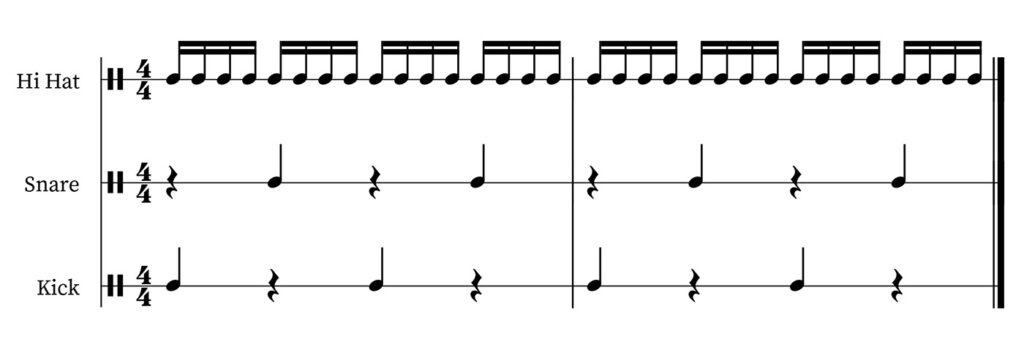
You get a completely different feeling when you play triplets with the hi-hat. It gives the rhythm a completely different groove:
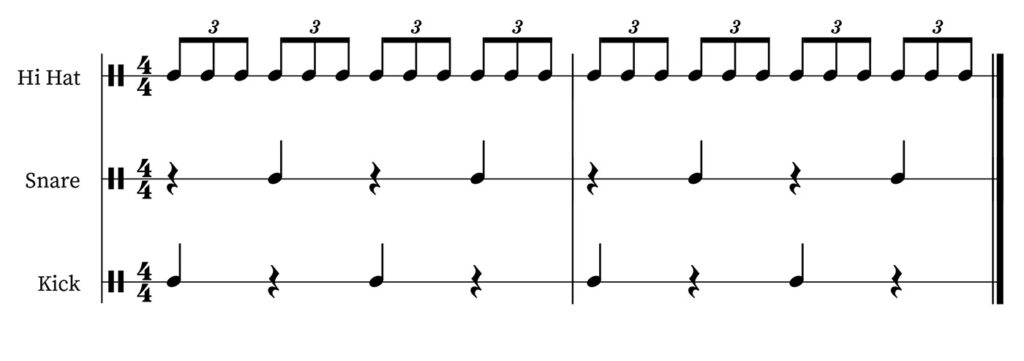
As you can see, you can create very different rhythms depending on which note values are played by which instruments. We have only looked at drums, but in a complete song all instruments play a role in the overall rhythm, even the melodic instruments like bass or guitar contribute to the overall groove.
Often, the rhythmic patterns of different instruments are matched to each other, and together they create an entirely new overall rhythm, made up of different "little" rhythms. This is called counterpoint, and you can learn more about it in my extensive article on counterpoint.
What is the difference in music between bar, time signature and tempo?
Bar, time signature and tempo are three basic terms in music that are often confused, although they describe different aspects of the rhythm and structure of a piece of music.
Bar
The bar is a rhythmic unit used in music to organize notes and pauses. In musical notation, the beginning of a bar is often marked by a vertical line called the bar line. A bar is a continuous group of beats defined by the time signature. For example, a bar in 4/4 time signature has four quarter beats.
Time signature
➔ Click here for the detailed article on bars and time signatures
The time signature indicates the basic rhythmic structure of a piece of music and is often indicated by a fraction at the beginning of the staff (such as 4/4, 3/4, 6/8, etc.). The numbers in the fraction indicate how many beats are in a bar (numerator) and which note length represents a beat (denominator).
Tempo
➔ Click here for the detailed article about the tempo
Tempo refers to the speed of music and is measured in beats per minute (BPM). There are various Italian terms such as "allegro" (fast), "andante" (medium), or "adagio" (slow) that give a general idea of the speed. The tempo is independent of the time signature and only affects how fast or slow the notes are played.





